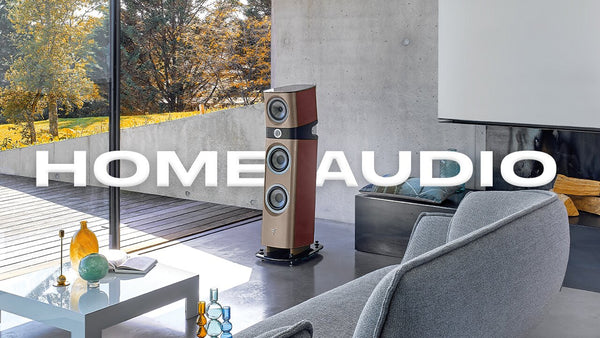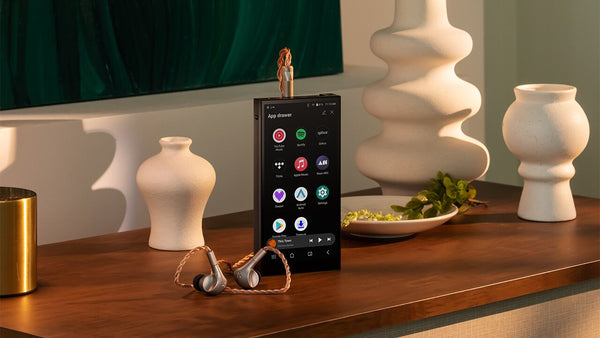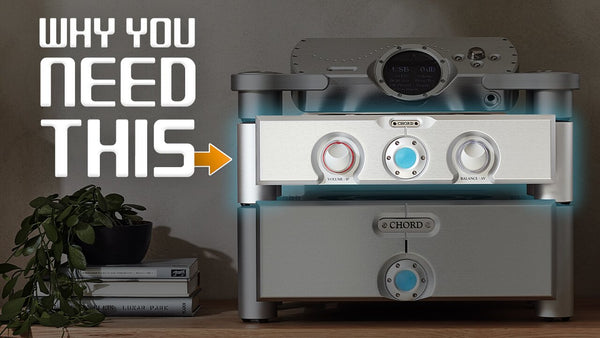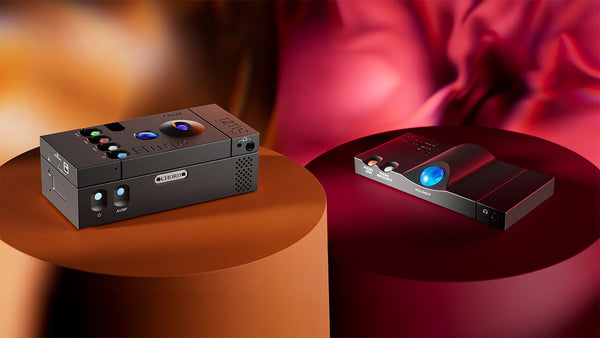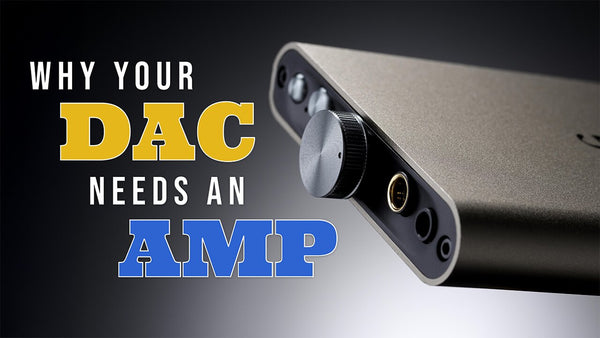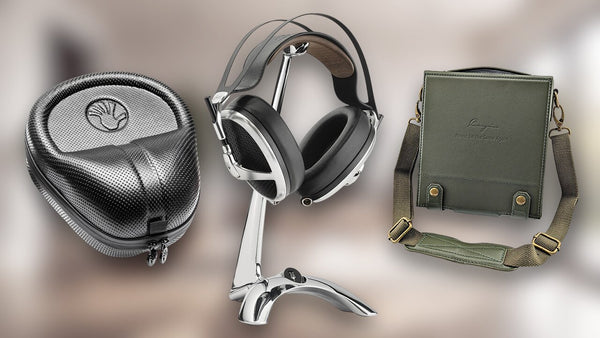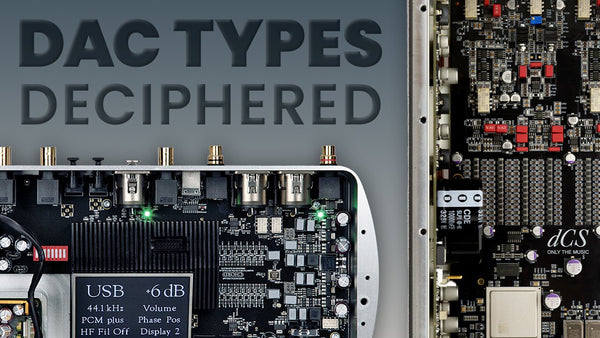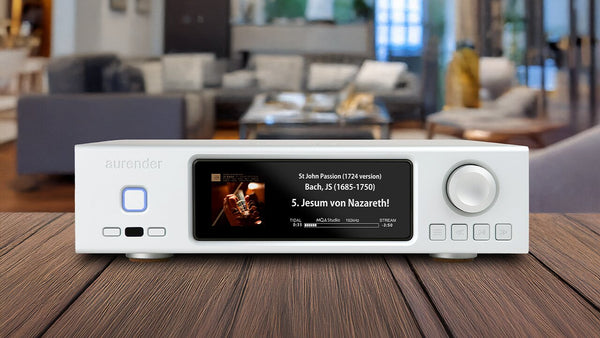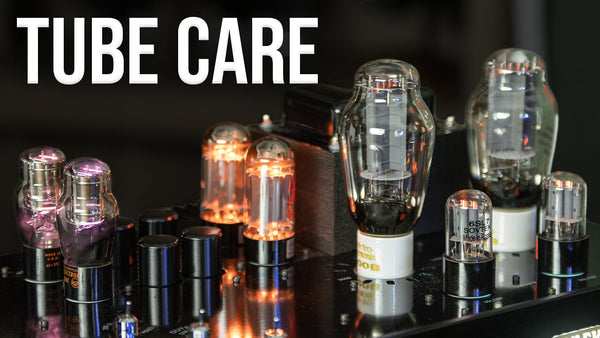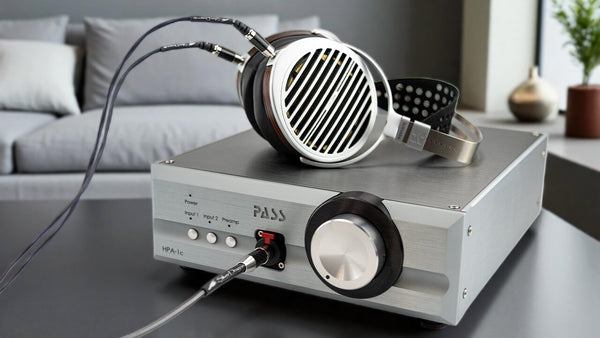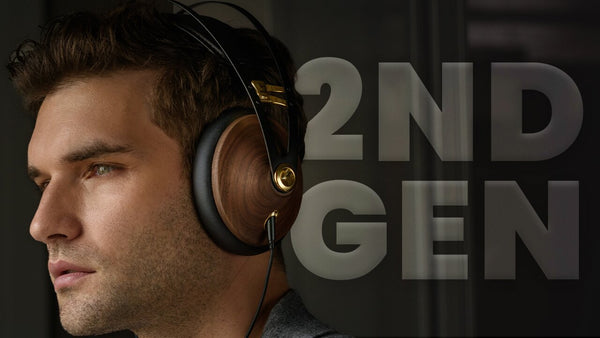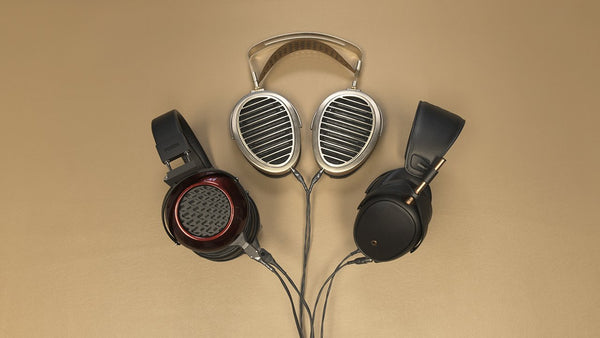Chord Mojo 2 DAC Headphone Amp Review
Read Time: Approx. 30 min.

Chord Electronics Gets Their Mojo Back
It's been a long time coming. "Mobile Joy" is about to get twice the joy, as we can now happily say that the long awaited Mojo 2 is finally here. More joy, better specs, and happier music enthusiasts all around, right? The original Mojo was a groundbreaking and beyond-popular device, offering some of the best sound and fidelity you can get in a super-small and portable package. On top of the appealing size, so too was the price tag, making for an affordable unit that wallets of every size and amount could obtain.
Originally designed based on the Chord Hugo, the Mojo was destined to become the perfect accessory to your smartphone. Offering a reference-quality mobile DAC and a superb headphone amplifier, the Mojo represented amazing sound quality that as they say, "rivals DACs at twenty times the price." They're not wrong, as you can look up any online forum or thread and find no shortage of sincere praise for the little device.
It hasn't necessarily been a secret that the next iteration of the Mojo was on the horizon. Many had speculated what the new specs could be, would it take the same form factor - just HOW would it be upgraded? Well, worry no more, we have all the answers to your questions and more. So without delaying any further, let's get to it.
Chord Mojo 2 Portable DAC & Headphone Amplifier Review

PROS
- Same Artix 7 Chip, FPGA code is new, improved, and updated
- Mojo was 38,912 taps, Mojo 2 is 40,960 tap filters
- Improved filtering and added DSP/more control/USB
CONS
- Roly-ball controls still here
- Same output power, but lower noise floor
- Color-coded controls can be confusing
The Birth of Chord's Mojo
"I'm listening to Chord's new Mojo Digital-to-Analog Converter (DAC) and amp as I write this. I've flown almost 4,000 miles to have THIS musical experience. Here is what I hear...Dead quiet."
- Drew Baird, P.E., CEO of Moon Audio. Oct. 20, 2015
Drew Baird, P.E., CEO of Moon Audio at the Chord Mojo release event in 2015 (London, U.K.)
Drew was there 7 years ago when it was revealed. You can even see the precursor mock up of the Poly before it was even in development in the pictures. Audiophile history, folks. As you can tell, Drew was impressed.
Chord Electronics is one of our most popular brands at Moon Audio, and for good reason – they are incredibly well-made and deliver phenomenal performance to your audio setup. The Mojo is the brainchild of Rob Watts since he oversees the digital design at Chord Electronics; it is a small, smartphone-friendly, and powerful DAC amp. Chord Electronics’ Mojo (which stands for ’Mobile Joy’) digital to analog converter (DAC) and headphone amplifier creates a new approach to high-end digital audio sound via headphones and in-ear monitors (IEMs). The Mojo is a true reference-quality mobile DAC and a high-level amplifier whose sound rivals DACs at twenty times the price. At its essence, it's meant to be a more portable Hugo: smaller while still providing some of the best sound you can get on the go.
The Mojo drives almost any headphone between 4 ohms and 800 ohms so most headphones. Mojo can drive two pairs of headphones simultaneously as well, and works with any music file from 44.1kHz up to 768kHz and DoP DSD files: DSD 64, DSD 128, and DSD 256. It provides the mobile audiophile with everything they need apart from the music itself. Without further adeau, let's see how Chord ups the ante with the new Mojo 2.
Design
Guess what? If you didn't look closely you would probably think that nothing was changed - and that's a great thing, because the form factor of the original Mojo was simply excellent. It was small enough to be palm-able, but robust enough to have all the I/O you would need in a sturdy package. Chord nailed the design on the first try, so there is absolutely no need to update it. The chassis is made from bead-blasted high-grade aluminum, and the design retains the button controls. The only difference is that there is one more button on the new Mojo 2: the new "menu" button. They have been shrunken down overall in size and unlike the original design where the buttons rotate in the socket, the new buttons are stationary on the Mojo 2, and you are only able to press them inward. I'm not sure why this change was made, perhaps less moving parts the better as is typically the case with most electronics. The buttons still have a nice click to them, but with the new menu system all the color-coding can be a but confusing. We'll go over the color coding later in the features section as well as a more thorough overview in our User Guide for the Mojo 2.
The I/O is also modified slightly on the new model. On the right side of the device, you'll find the following ports (from left to right): Coax/dual-data Coax, USB-C and micro-USB (data only), micro-USB (power), and optical. The addition of the USB-C port is a welcome one, but there are some caveats which we'll talk about later (it's for data transfer only). On the left side of the device you'll find the exact same layout as the original Mojo, with dual 3.5mm (unbalanced) headphone jacks. Design-wise, the new Mojo is compatible with the Poly just like the old one. The footprint is identical, so you'll have no issue connecting your Poly with the Mojo 2. *Also, if using the Poly with the Mojo 2, be sure to update your firmware version for compatibility fixes.
It's also worth noting here that the clamping force for the headphone jacks is much tighter than the original Mojo. This means that Chord went out and found a new connector socket with a higher tolerance as well as the fact that there a lesser chance of static in the signal due to less wearing and bending on the connector. This was a complaint with the first generation Mojo, as the connections were sometimes loose and allowed for more bending of the connector inside the jack, causing the tip and the materials to get scratched, bent, and damaged over time. Tighter sockets will definitely help in this regard.
The bottom panel of the Mojo 2 looks to be exactly the same as the original Mojo, with a cutout to make room for the new USB-C port. The bottom of the port actually acts as the fourth "foot" of the device, laying flat. Depending on the cable, this could be a potential issue if your connector is thicker then it could cause the unit to lay uneven on the desk or table. Most times this is not an issue, and we're hard at work creating a new USB-C cable for the Mojo which allows it to lay flat on surfaces when the USB-C port is in use. The positioning of the port also makes this a great option for a more stable connection too, preventing the cable from bending downwards and allows it to lay flush with the table. The top of the new Mojo 2 has been modified quite a bit with the smaller, but 4 button slots as opposed to just three larger ones from the original unit. Also, the Chord logo cutout is smaller and curved completely instead of more squared off. I suppose technically this could provide a little more room for internals, but I can't imagine it would make a huge difference apart from aesthetics only.
Overall, the build quality and materials are just as astounding as they were on the original Mojo DAC. You know what they say: if it ain't broke. I'm glad to see Chord removing the rattling, rotating ball controls and going with a more stable push-control. I'll also take more buttons for more control any day regardless if the color coding can be a bit confusing at first, and the added USB-C is a welcome touch, even if it is only for data transfer. It's a solid update to an already great product.
Sound
For all you spec-heads out there, you shouldn't be alarmed to find that some specifications of the new Mojo 2 aren't changed at all from the Mojo 1. The best case scenario is that you connect both the Mojo and Mojo 2 as a group in your music playback setup and voila, the perfect A/B test. Fortunately, this is exactly what I did, being able to jump back and forth with the only change in the signal chain being the Mojo. For my testing purposes, I paired the Mojo 2 with the Meze Audio Liric Headphone, a Silver Dragon USB cable to PC, and a Silver Dragon Premium Headphone Cable for the Meze Liric Headphones. I also tried a myriad of other headphones for power testing purposes which I'll cover at the bottom of this section.
Let's take a look at the internals which help develop the sound of the Mojo 2. The Artix 7 chip is the exact same chip used the in first Mojo - but in the way it's being utilized the chip is only carrying code. Rob Watts has designed it to be the brain of the DAC using his latest and greatest algorithms. Other manufacturers use firmware updates to upgrade and change the sound of a device. If there is a specific update that you don't like, then you have to go through the hassle of rolling back firmware updates, downloading, and reinstalling older firmware versions based on your preferences. In some cases firmware or software updates can be released broken, rendering your device unusable until a new updates is released or you're forced to rollback versions. Rob Watt's philosophy is that once he's designed and found the sound that he wants, Chord sticks with it for the entirety of the product lifespan. The Artix 7 in this case is only being used for the coding, software, DSP for the EQ, etc.
The basic circuitry of the Mojo 2 hasn't changed much since the original Mojo, but what's been drastically improved is the layout - with shortened paths for less noise all around. The main difference in the circuitry is the PSU with added regulation on the amplifier for improved performance while charging. A big complaint with the Mojo 1 was that you would get added noise while charging. This wasn't necessarily a negative thing as it was simply the filter in the Mojo doing it's job dealing with dirty power from your wall socket. Typically, there isn't a filter built into USB chargers so Chord decided to build one internally into the DAC itself. Many times it was the charger itself that was the culprit because users tended to use OEM chargers that they had lying around from all their other electronics. Down the line Chord ended up making a revision to the Mojo, and now with the Mojo 2 they've taken it one step further with the PSU improvements. The benefit of this really shows off in the crosstalk noise measurements.
FPGA code is newly improved and updated. The original Mojo had 38,912 taps whereas the Mojo 2 has 40,960. More filter taps means closer to the original audio of the recording. It all has to do with the modulation between frequency response and the noise level in the unit. As you increase the volume and the freq. response, the noise floor adjusts with that volume. The Mojo 2 has dramatically improved the coding to do this more efficiently and accurately. It also has better filtering, with 40 DSP cores for better transparency (this is a larger influence on the sound quality than the increased tap number). Jitter reduction specs remain the same and a lot of work went into reducing 2G and GSM buzzing sounds which were issues with the Mojo. This wasn't RF but low frequency interference from mobile signals. This issue however is rapidly disappearing as 2G is getting phased out and noise interference is less of an issue with 4G and 5G.
It's also important to note that Chord makes it very clear that there is no sound quality difference between using the USB-C and micro-USB data ports. Both will produce the same audio specs depending on how you configure the Mojo 2 in your setup. Mojo 2's auto-detect input order will also prioritize micro-USB, and then USB-C (in that order). We ultimately recommend using the USB-C connection due to placement of the port and the connector support it will add for cables, plus you can keep those micro-USB jacks pristine for connection with the Chord Poly if you want to use it for streaming as well.
So I repeat, "how does it sound?" In a single word: meatier. It's like going from a can of Campbell soup to the Chunky version. There's more to the music, and since the coupling capacitors were removed there is much more bottom-end weight to the sound. This was a design choice to make the bass response sound more like the Hugo 2. It's not a night-and-day difference, it's quite subtle, but there is more perceived information to the music. Of course, this overall effect will vary with different setups, headphones, etc, but side by side it's noticeable. Listening to the finale of Stravinky's Firebird Suite, the details of the high staccato strings sound like fireflies dancing in the summer night, and then the french horn fanfare slowly comes in, filling the low-mids with a heaviness. That heaviness is missing from the original Mojo. It's more expressive, hearing more details in the intonation in that range that were masked before. The overall crescendo to the finale is moving, the dynamics of the orchestra standing out - just MORE. Timpani hits are booming in a way that the original Mojo couldn't do.
I'm quite impressed with the depth and detail resolution overall. Much of that is thanks to the improved noise-shaping of the Mojo 2, but it's just a nice and clean sound. Even in older recordings (yes, I know a lot of the releases now are remastered and cleaned up A LOT), but tape noise is still heard in some respects, and it's a lovely quality to retain in the song, especially when it doesn't get in the way of the instrumentation itself. Norwegian Wood is a beautiful example of the details of the picked and strummed acoustic parts being balanced by the thumpiness of the Hofner bass. I'm even hearing some slight bass distortion in the recording itself from what sounds like a channel overdrive (not sure - don't quote me on that). The sparkle even shines through on the sitar strums, shimmering on after the lower frequencies die out. The panning of the instrumentation in this song show off the noise floor and transparency well. You can tell a lot about a product in the silences between the music.

The Firebird Suite
By Igor Stravinsky

Norwegian Wood (The Bird Has Flown)
By The Beatles
(Rubber Soul)

Rockin' the Suburbs
By Ben Folds
(Rockin' the Suburbs)

Everlong
By Foo Fighters
(The Colour and the Shape)
Features
The Mojo 2 features some nice quality-of-life upgrades from the original model which came out seven years ago. Updating the I/O was a necessity, especially for the inclusion of USB-C. It's becoming the new standard for charging and data transfer, so the fact that Chord has included this is a plus. Kind of. Unfortunately, the USB-C port is only for data transfer, along with the other micro-USB port. Charging on the Mojo 2 is only available via micro-USB, since they only include a single micro-USB to Type-A cable with the device. I would have liked to see USB-C charging as an option since most people are already carrying around a USB-C cable for their modern electronics. The micro-USB power just feels like a step backwards unfortunately. The Mojo 2 includes an auto-detect input mode and it'll cycle through the inputs in the following order: micro-USB, USB-C, then coax and optical. Keep in mind that Mojo 2 only allows for one USB connection at a time. We will recommend USB-C for data connection due to the positioning of the port allowing for a flush and stable connection without vertical bending.
While we're at it, let's just get the rest of the bad (but not really bad) out of way. Being able to run dual headphone outputs simultaneously was a great feature of the original Mojo. However, the actual usefulness of the audio splitter, especially considering the shared volume control, would depend on a case-by-case basis. Personally, I would have found the inclusion of a balanced port option (4.4mm or even 2.5mm) much more useful. Many of us already have balanced cables for our favorite headphones, and forcing the user to fall back on a single-ended cable limits the overall usability of the device. DACs a quarter of the price even include balanced connection options, so again, rather than keep the dual-3.5mm design (which is still nice), the addition of a balanced option would have taken the DAC/Amp to the next level in my opinion, but Chord made specific design choices to maximize the overall performance of the device. That being said, due to the sound quality coming out of this device I don't care that much. Balanced isn't always better and considering Chord's reputation and product history, it's doesn't make sense for them to include one here. It would ultimately pay a toll on the battery life and internal circuit design. It's fine as it is.
No, the Mojo 2 doesn't have Bluetooth. Stop asking for Bluetooth. Why would Chord give the Mojo 2 Bluetooth which would effectively make the Poly obsolete? Plus adding Bluetooth would bypass everything designed in the Mojo that sounds amazing. Stop it. Bluetooth is great. Bluetooth on Mojo is not great. Moving on...
On the Mojo 2 with Rob Watts
In discussing some of the design choices of the Mojo 2 with none other than Rob Watts himself, you can see some method to his madness for great sound. We were discussing "Lossless DSP" and how it worked in the Mojo 2. To Rob, lossless means transparent. Transparency is all about perfectly preserving the original music signal, plus perfectly performing the EQ filter functions. SO what does he mean by "perfect" in regards to EQ? "If you can't measure the actual performance, then 'perfect,' 'transparent,' or 'lossless' are mere words with no verifiable meaning." For Rob there are three important features to transparent performance: small signal amplitude accuracy, small signal phase accuracy, and noise floor modulation.
Small signal amplitude accuracy is something Rob Watts has known about for many years with many listening tests confirming its importance.
While developing the DAVE, "I could put a number on the requirement - basically, in order to preserve the perception of depth, I needed to be able to reproduce a -301 dB signal with an amplitude accuracy of +/- 0.001dB - these numbers are confirmed through digital simulation - in short digital domain measurements. If a noise shaper or digital module failed this test, it would degrade depth and detail perception. So if we want to preserve depth (lossless depth perception) its essential that any DSP needs to pass this demanding test." Small signal with amplitude phase accuracy is when you compare the phase shift from a 0dBFS signal, against the same signal but at -301dB. "Again, to pass the test the phase shift needs to be identical with the different amplitudes (identical meaning within +/- 0.001 deg). This realization that digital circuits phase shifts are non-linear with amplitude started with work onto why the Hugo M scaler had better perception of depth. Since my WTA filters are small signal amplitude perfect, it implied that phase shifts with amplitude could degrade depth perception too." Rob tested this out with Mojo's improved noise shapers - the original Mojo noise shaper did have a phase error at -301dB, and eliminating this gave much better depth perception. The final issue is noise floor modulation, where the noise level changes with signal level. Rob mentioned that "Noise floor modulation is very audible; I have heard effects when the noise floor modulation is well below measurable limits. Eliminating noise floor modulation in digital modules is possible with fixed point architecture and using noise shaping for truncation; conventional floating point DSP have significant and measurable noise floor modulation."
"With EQ these problems are further compounded with IIR filters, as internal nodes are severely attenuated by low frequency coefficients - these nodes are then accumulatively amplified over time - thus a small error gets magnified into a substantial error. Indeed, I initially calculated that I would need 104 bits DSP for transparent operation - vastly larger than 64 bit DSP - but after designing the custom core, and running my suite of tests for transparency, the measurements for small signal phase failed - even with 104 bit processing! The solution was to uniquely incorporate noise shaping on every internal node. Noise shaping allows the EQ to work linearly below 104 bits, as an error is constantly corrected. The core also passed my listening tests for transparency too."
The Mojo 2's transparency is something you have to hear. If you thought the sound and measurements were good on the original Mojo, then your ears are in for a treat, as Rob's trifecta of transparent performance can attest. If it's good enough for Rob's ears, it should be good enough for yours.
Quick Start & Operations
- Charging: For optimum performance fully charge before use. Connect the MicroUSB charging port to power. Battery status light, Blue = fully charged. Purple = desktop mode when permanently connected.
- Connect inputs: Connect digital devices via MicroUSB, USB-C, optical, or coaxial. Mojo 2 will auto-select the input when music is playing. Note that USB takes priority over coaxial and then optical (in that order).
- Connect headphones: Connect up to two pairs of headphones via the dual 3.5mm ports. Note that the volume adjusts both headphones together; there is no independent control.
- Power up.: Press and hold the power button until illuminated, then release. The button will cycle through colors and click before being ready to use (the audible *click* is normal).
- Volume adjustments: Before use, press and hold the "-" volume button until both "+" and "-" are unlit. When music is playing, safely increase the volume using "+" to a comfortable level. Use "-" to reduce volume as necessary.
Of course, with more buttons comes more control, and that's a good thing. The bad thing is that there's more colors and menus to learn and memorize. It's worth the trade-off though, and the new Menu button adds quite a bit of functionality to the Mojo 2 DAC. Here are just a few of the menu settings - you can find much more information in our Product User Guide for the Mojo 2.



Please note that due to the small amount of buttons and large number of functions, it will be important to read over the User Guide to better understand the full functionality of the Mojo 2 to get the very most out of your DAC Amp. For instance, Poly users will not achieve a white charge status light (indicating maximum charging power) while both devices are charging simultaneously. One feature I know many will appreciate is the new Intelligent Desktop Mode. Mojo 2 can be left connected to a power source at all times if desired. In this mode, when fully charged, Mojo 2's menu and battery status light displays a nice cool purple, indicating the end of the charge cycle and and the initiation of Intelligent Desktop Mode which regulates charging to preserve the battery.

The shape of the colored areas demonstrate how the DSP lift and cut ('shelf' controls) affect the range of frequencies within each of the four main groupings. The lift/cut either tapers off (with bass) or swells (with treble), when moving through the frequency range.

Common musical instruments on the frequency spectrum, in a very brad sense, demonstrating how the prominence of instruments might be affected when making adjustments using the DSP tone controls.
Please feel free to check out the Mojo 2 User Guide which we've developed to cover all the ins and outs of basic control and functionality of your Chord Mojo 2 DAC Amp.
Dragon Cables
[Silver Dragon USB Cable, Silver Dragon Premium USB Cable]
For my testing setup, I used the Chord Mojo 2 DAC with a Silver Dragon USB Cable for hookup to PC, and a Silver Dragon Premium Cable for Meze Liric Headphones to connect the Meze Liric. There are a couple options of here when it comes to replacing the OEM cables. Of course, we always recommend upgrading because most stock cables are made of poor, ultra-thin conductors with poor geometries, rubber jackets, and other issues that can limit the performance of your equipment. When it comes to USB connection to your device, both Silver Dragon USB and Black Dragon USB cables would make excellent choices due to the nature of the cables being built to audio transfer specs. Be assured due to the quality of materials we use that your data packet transfers will be more efficient and reduce jitter. Headphones are the other part of the equation where your Dragon Cable pairing will depend. Silver was a great option for the Liric since it maintained the high-level of detail provided by the Mojo 2 and tightened up the low-end. It made for a very resolute listening experience all around.
Verdict
There's a reason why no other DAC sold as well once the original Mojo was released. It was that good. It brought unparalleled sound to your mobile setup. Audiophile-grade audio with fidelity and power unmatched. The reigning king of portable DACs. Every reign has to end at some point.
It's better it be overthrown by a new version, and Chord has outdone themselves with the Mojo 2. Sure it might not have all the features some people were hoping like Bluetooth and balanced connections, but when you look at the device and how it's designed you ultimately come to realize you don't need them. Chord Electronics has designed the Mojo 2 to be the powerhouse of your setup. Whether you're posted up at a desk with the Silver Dragon USB Cable as your perfect link, or on the go with the one of our Premium Headphone Cables, the Mojo 2 delivers high-performance.
The sonic upgrades are there - don't be fooled by some of the specs being identical. Sound doesn't just lie in new chips. Chord has a design process where they assess what really needs to be improved, and the Mojo 2 is a refinement in that art. Better transparency, more depth, improved bass response, larger battery - it's all there. And this is where I look to you, current Mojo 1 owners. I consider the best upgrading talking point to be the features. Let's just ignore the fact that the Mojo is seven years old already and probably in need of a new battery anyway. But it's the new features and upgrades that allows the listener more control over their music: Low/High gain options, better color-coded indicators (will take some time to learn), new menu filters, intelligent desktop mode, EQ, and much more. Yes, I would say it's a worthwhile upgrade even if you have the existing Mojo.
Featured Products
FAQ
Does the Chord Mojo Support MQA?
⌃
Is the Chord Mojo a Headphone Amp?
⌃
How Do You Use the Mojo 2?
⌃
What does the Chord Mojo 2 Do?
⌃
What does the Chord Poly Do?
⌃
Related Videos
Chord Mojo 2 Unboxing Video
Chord Mojo 2 Review–Drew's Impressions
Chord Mojo 2 DAC: Features, EQ, & More Explained
What's in the Box

- Mojo 2 DAC Amp
- Micro-USB to Type-A cable
- Quick Guide / Paperwork
Specifications
Technical Features
- Five digital inputs: coaxial, dual-data coax, optical, Micro-USB and USB-C
- Dynamic range 125.7 dB A wt.
- Noise 2.7 uV A wt., no measurable noise floor modulation
- Distortion and noise 0.00027 % at 2.5 V 300 ohms
- Power output 1 % distortion:
- 90 mW 300 ohms (5.2 V RMS)
- 600 mW 30 ohms (4.2 V RMS)
- 0.06 ohms output impedance
- 118 dB stereo separation 1 kHz 300 ohms 2.5 V























